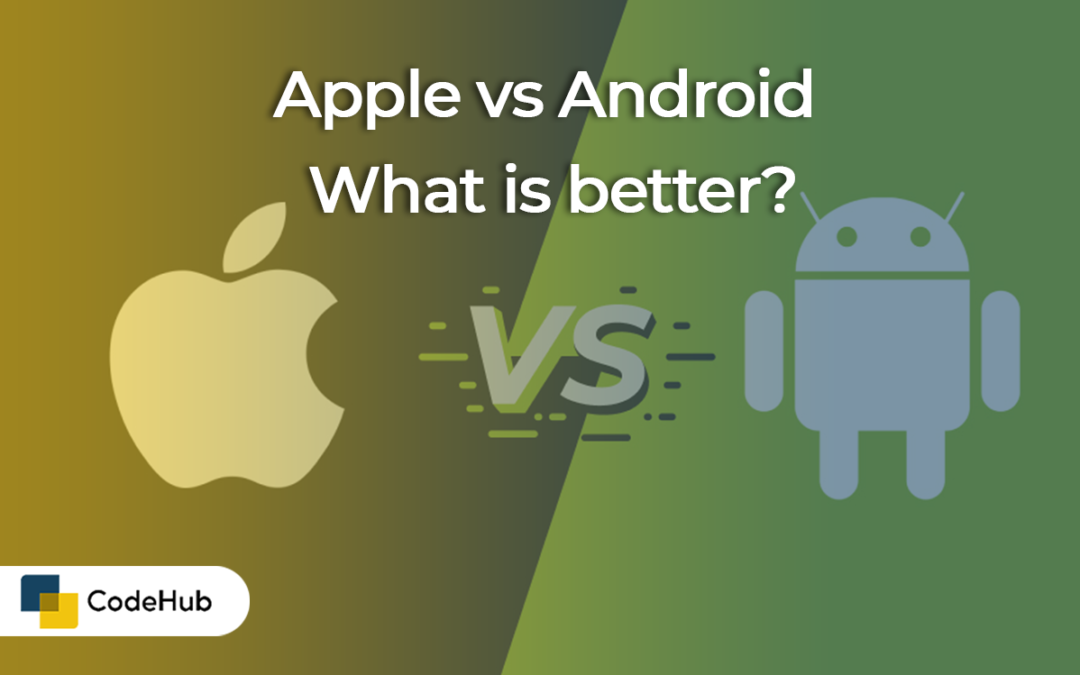If you are looking for a new smartphone, you might be wondering whether to choose an iPhone or an Android device. Both platforms have their pros and cons, and the best one for you depends on your personal preferences, needs and budget. In this blog post, we will compare some of the main aspects of Apple and Android smartphones, such as operating systems, app stores, security, price and hardware choices.
Operating Systems
Apple and Android have different operating systems that provide different user experiences. Apple’s iOS is a closed-source operating system that offers good security and high-quality apps, but less customization. iOS has a simple and intuitive interface that works seamlessly across Apple’s devices, such as Macs, iPads and Apple Watches. iOS also has some unique features, such as FaceTime, iMessage, Siri and AirDrop, that only work with other Apple devices.
Android is an open-source operating system that allows more flexibility and features, but also more risks of malware and other threats. Android has a more diverse and customizable interface that lets you change the look and feel of your device with widgets, launchers and themes. Android also has some features that iOS lacks, such as split-screen multitasking, picture-in-picture mode and native support for physical security keys.
App Stores
Both Apple and Android have fantastic app stores that offer millions of apps for various purposes. However, Android is far superior at organizing apps, letting you put important stuff on the home screens and hide less useful apps in the app drawer. Also, Android’s widgets are much more useful than Apple’s, as they let you access information and actions without opening the apps.
Apple’s App Store has fewer offerings than Android’s Google Play Store, but they are more compatible with the available devices. Apple has strict quality control and review processes for its apps, which ensures a higher level of security and performance. However, this also means that some apps may not be available or updated on iOS due to Apple’s policies or technical limitations.
Android’s Google Play Store has more variety and options for apps, but also more potential for low-quality or harmful apps. Android has a more open and flexible approach to app development and distribution, which allows more innovation and creativity. However, this also means that some apps may not work well or pose security risks on some devices or versions of Android.
Security
Security is one of the most important aspects of choosing a smartphone, as it affects your privacy and data protection. Both Apple and Android have built-in security features, such as encryption, biometric authentication and app permissions. However, there are some differences in how they handle security updates and threats.
Apple’s iOS has a reputation for being more secure than Android, as it has a more centralized and consistent system for security updates. Apple can push updates to all compatible devices at once, regardless of the carrier or manufacturer. This ensures that all iOS devices are running the latest version of the software with the latest security patches.
Android’s security situation is more complicated, as it depends on the device maker and carrier to provide updates. This means that some Android devices may not receive timely or regular updates, leaving them vulnerable to exploits or malware. However, Google has been trying to improve this situation by providing monthly security updates for its Pixel devices and requiring other manufacturers to follow suit.
Price
Price is another major factor in choosing a smartphone, as it affects your budget and value for money. Both Apple and Android have a range of devices with different price points and hardware specifications. However, there are some general trends and differences between them.
Apple’s iPhones are more expensive than most Android phones, especially the budget and mid-range ones that have more features than flagship iPhones. For example, the iPhone 14 starts at $799, while the Pixel 7 starts at $599. However, iPhones tend to have better resale value and longer software support than Android phones.
Android’s phones have more options for different price points and hardware specifications. You can find cheap Android phones with decent performance and features for under $200, or premium Android phones with cutting-edge technology for over $1000. However, Android phones tend to depreciate faster and become obsolete sooner than iPhones.
Hardware Choices
Your choice of hardware is similar to the options between macOS and Windows computers. With Apple’s ecosystem, you have a choice of just one hardware vendor (Apple), albeit a top-tier one. Apple makes high-quality devices with sleek design and smooth performance, but they are not very diverse or customizable.
Conclusion
Ultimately, the best mobile operating system for you depends on your individual needs and preferences. If you value simplicity, ease of use, and a high level of polish, then an iPhone may be the better choice for you. If you prefer more flexibility and customization, then an Android phone may be a better fit.
There is no right or wrong answer, and both platforms have their own strengths and weaknesses. The best way to decide which is right for you is to try both and see which one you prefer.

